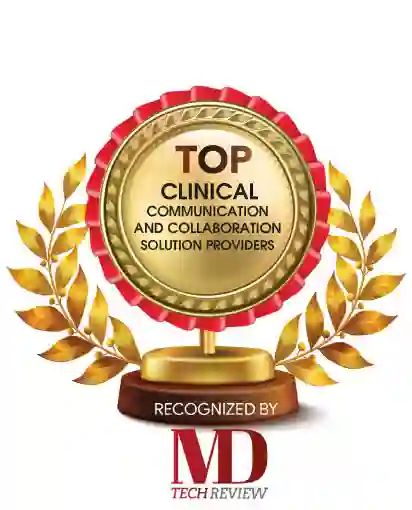Healthcare providers are frequently not aware of the components of the patient life cycle. As a result, the patient experience is remains incomplete as there is no information about who attended the patient, what therapy got administered, or what state the patient is now in.
FREMONT, CA: Clinical communications and collaboration systems allow physicians, clinicians, nurses, and other personnel to coordinate activities and share patient data via text, documents, telemetry, pictures, and video. This seamless communication minimizes the time it takes for hospital staff to respond to patients, enhances care transitions and patient throughput, and shortens it's time for hospitalized patients to get discharged.
These clinical systems are becoming increasingly common in the day-to-day lives of healthcare service providers thanks to technological advancements and the increasing adoption of smartphones. They help illuminate a clinician's availability and the best course of treatment by integrating with clinical scheduling tools, reducing response time, and improving the patient experience. The following are some of the reasons why your hospital requires a clinical communication and collaboration system:
Process automation
 When coupled with other essential IT systems, a clinical communication and collaboration platform delivers high levels of interoperability, allowing for efficiency gains that reduce referral leakage, re-admissions, and treatment delays. Thanks to role-based scheduling automation, everyone in the health system can instantly search up and contact on-call employees and specialists. Users can save a lot of time that would have been spending routing calls through an operator this way. In addition, because finding the correct caregiver is easier, care is delivered more quickly.
When coupled with other essential IT systems, a clinical communication and collaboration platform delivers high levels of interoperability, allowing for efficiency gains that reduce referral leakage, re-admissions, and treatment delays. Thanks to role-based scheduling automation, everyone in the health system can instantly search up and contact on-call employees and specialists. Users can save a lot of time that would have been spending routing calls through an operator this way. In addition, because finding the correct caregiver is easier, care is delivered more quickly.
Timely alerts
Healthcare providers are frequently uninformed of components of the patient life cycle. As a result, the patient experience is lacking because there is no information about who attended the patient, what therapy got administered, or what state the patient is now in. A clinical communications and collaboration system, on the other hand, delivers automatic notifications to physicians when certain events that could lead to admission occur. Providers can receive important notifications from the EHR immediately on their mobile devices, as well as specifics of urgent requests, allowing them to swiftly give the most appropriate care, reducing staff fatigue, and enhancing care efficiency.
Staff optimization
Using a clinical communication & collaboration system, staff can receive clear communications via encrypted text instead of waiting for callbacks to receive vital patient information. As a result, clinicians can spend more time with patients if they spend less time coordinating treatment, improving work satisfaction, patient safety, and throughput.
Mobility
A clinical communication and collaboration system's mobile capabilities are recognized to facilitate communication between care professionals, provide insights, and reduce reaction times. For example, hospital staff can use their smartphones to remotely check patient health and send SMS reminders for critical follow-up care. Such treatments can help doctors recognize growing problems before they become severe enough to require hospitalization.
See Also: Top Healthcare Solution Companies



